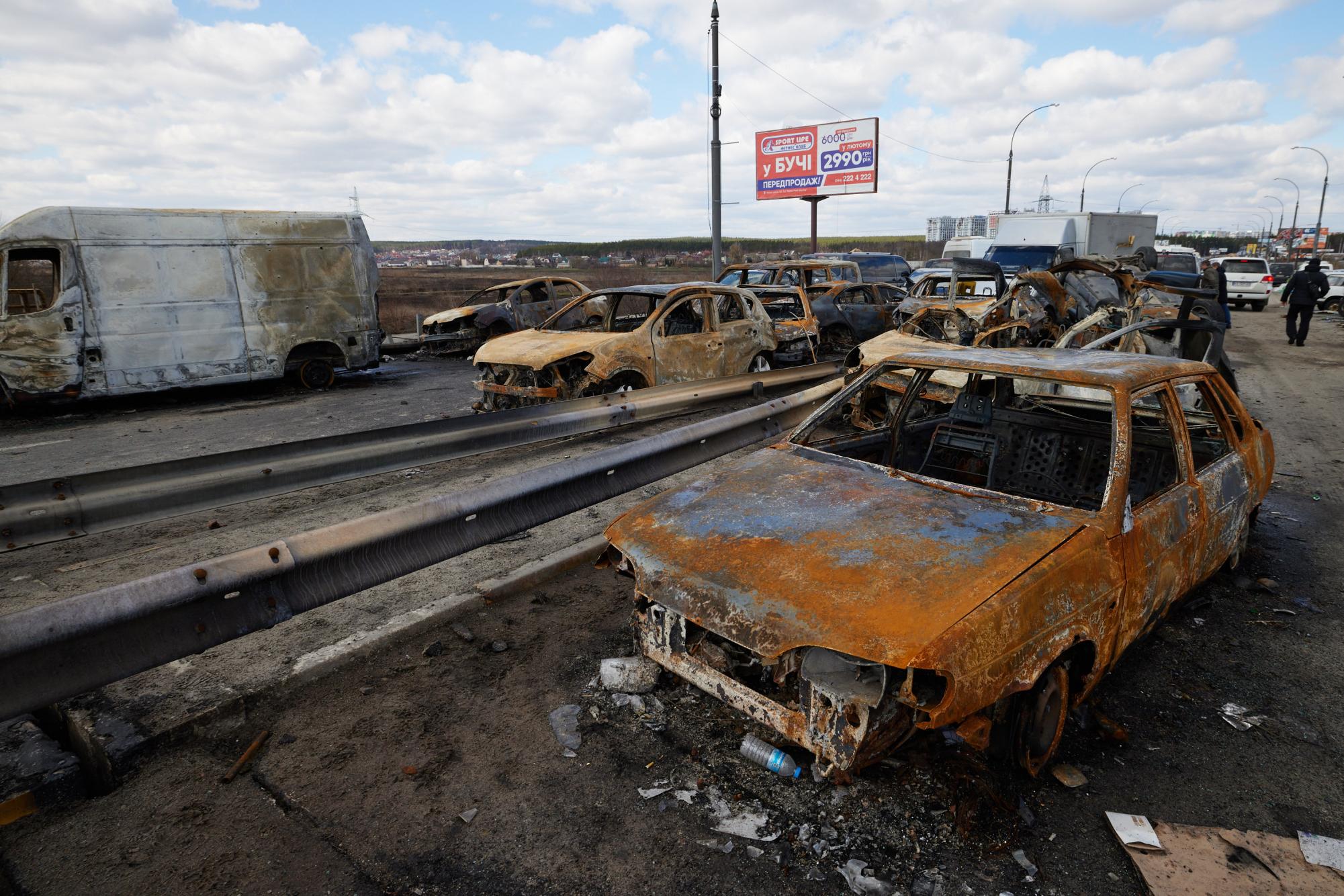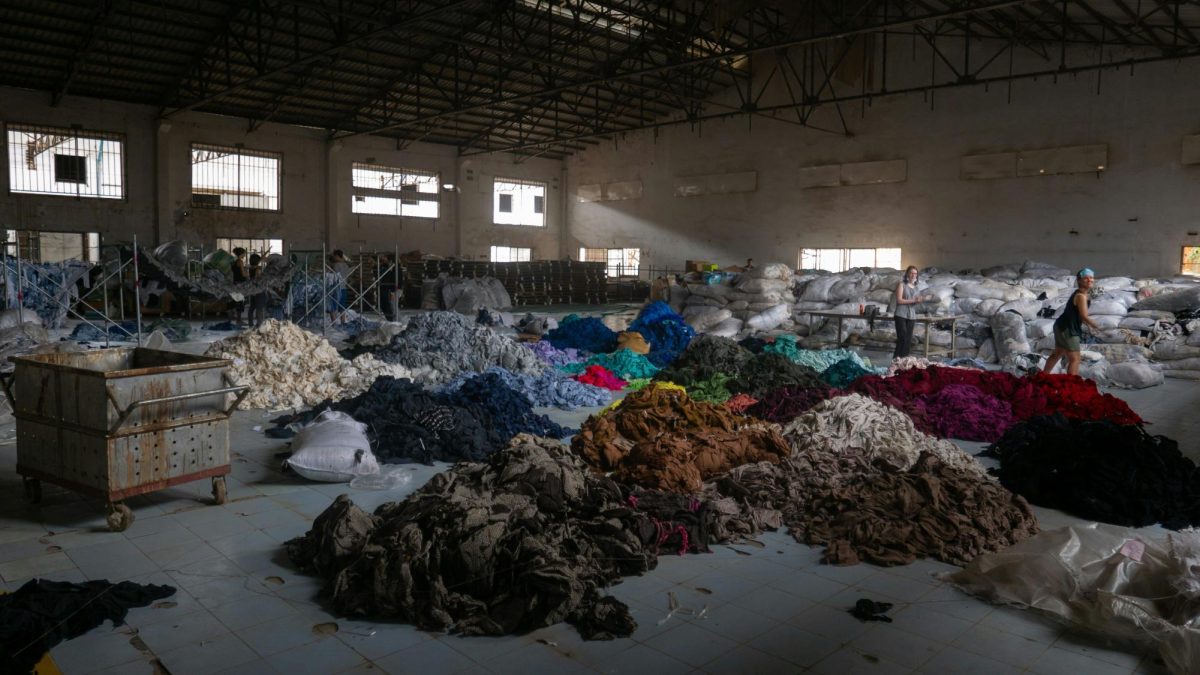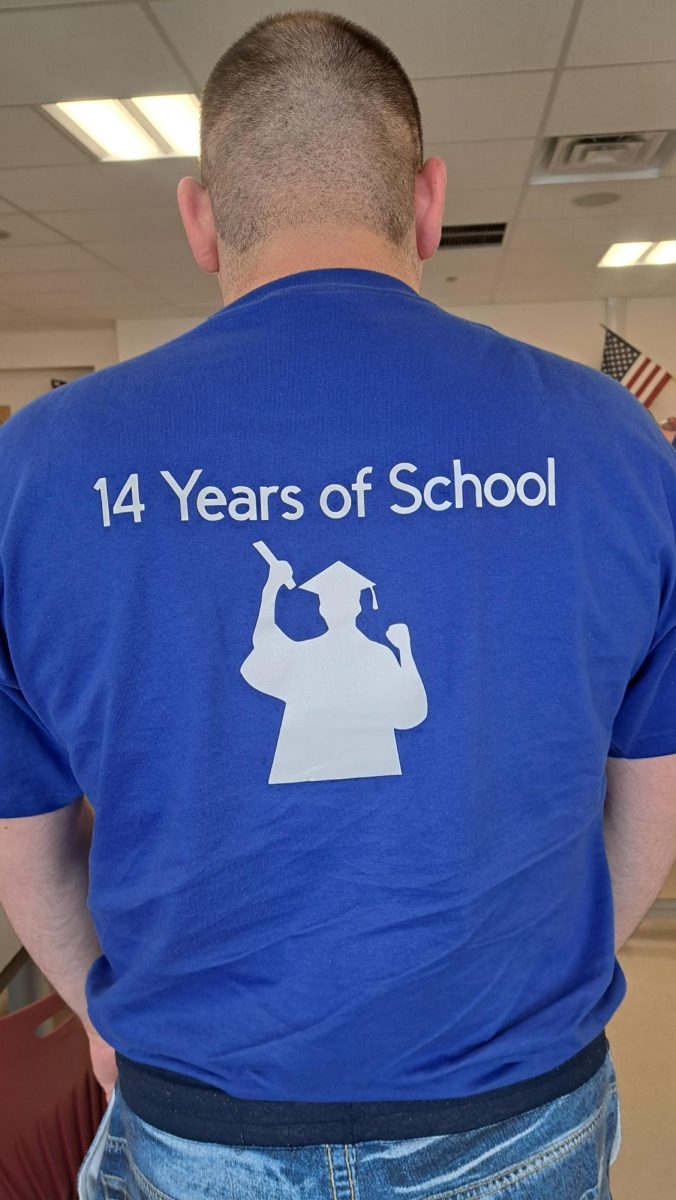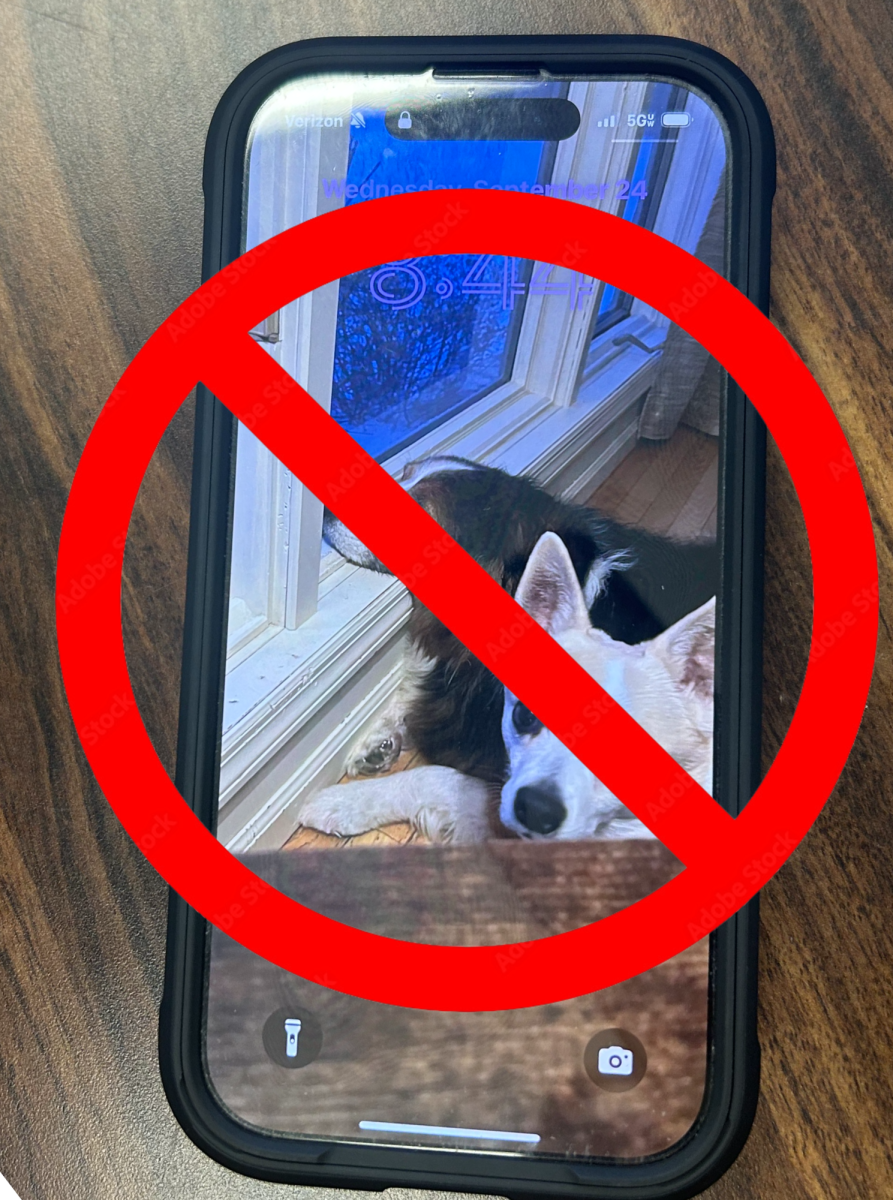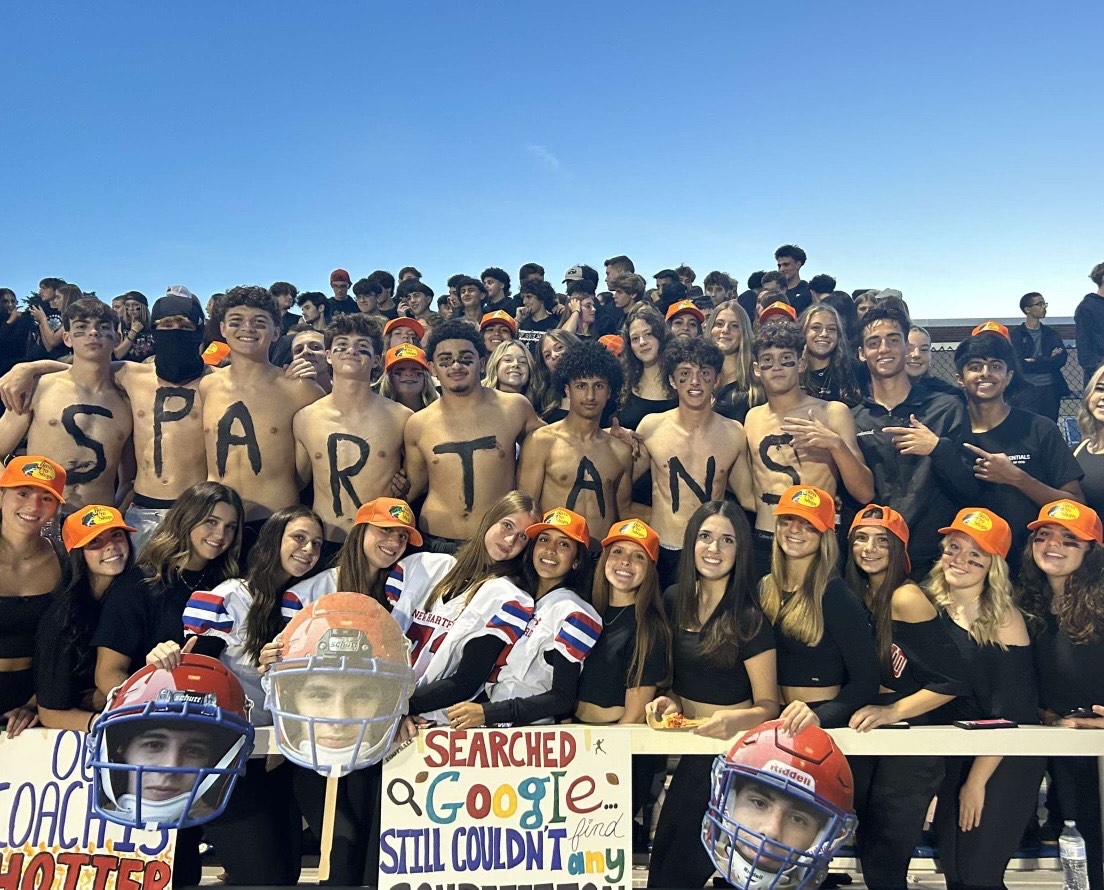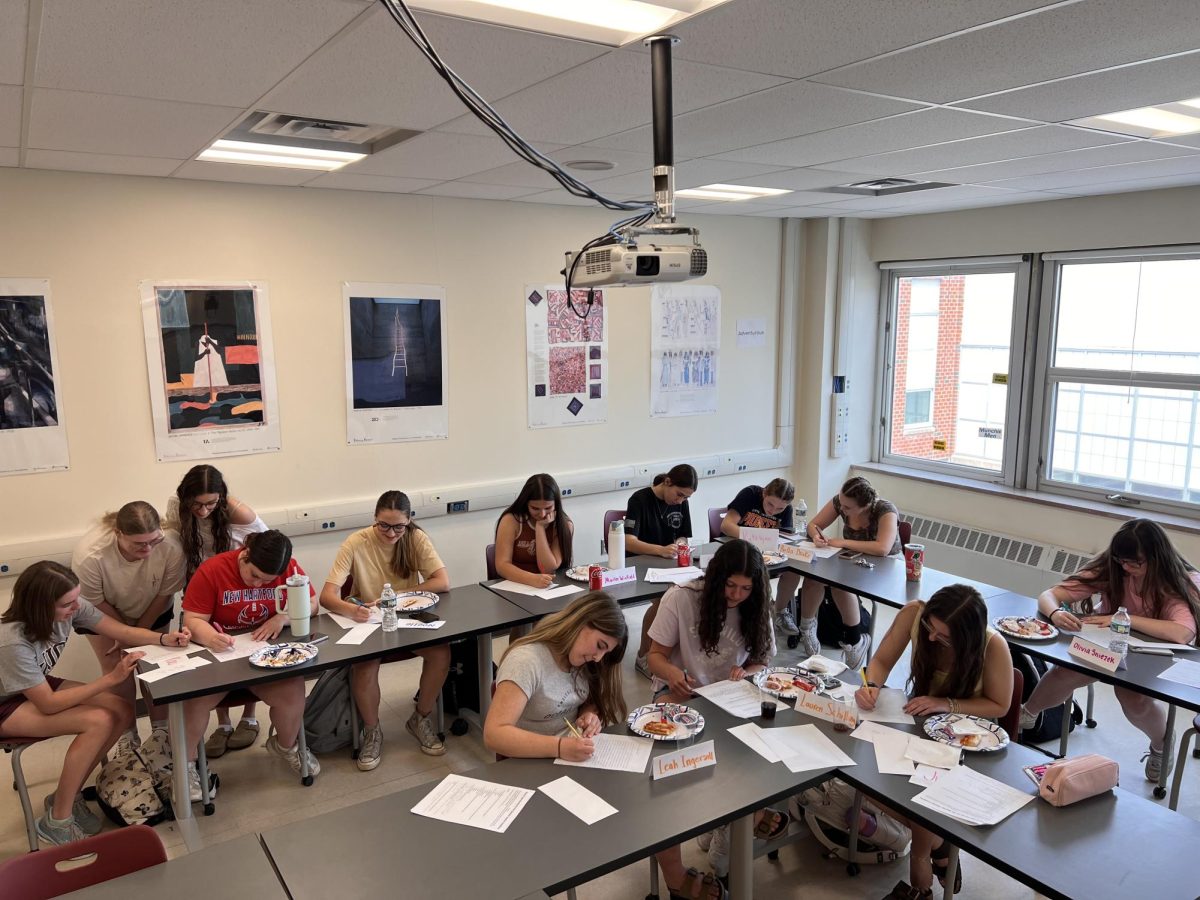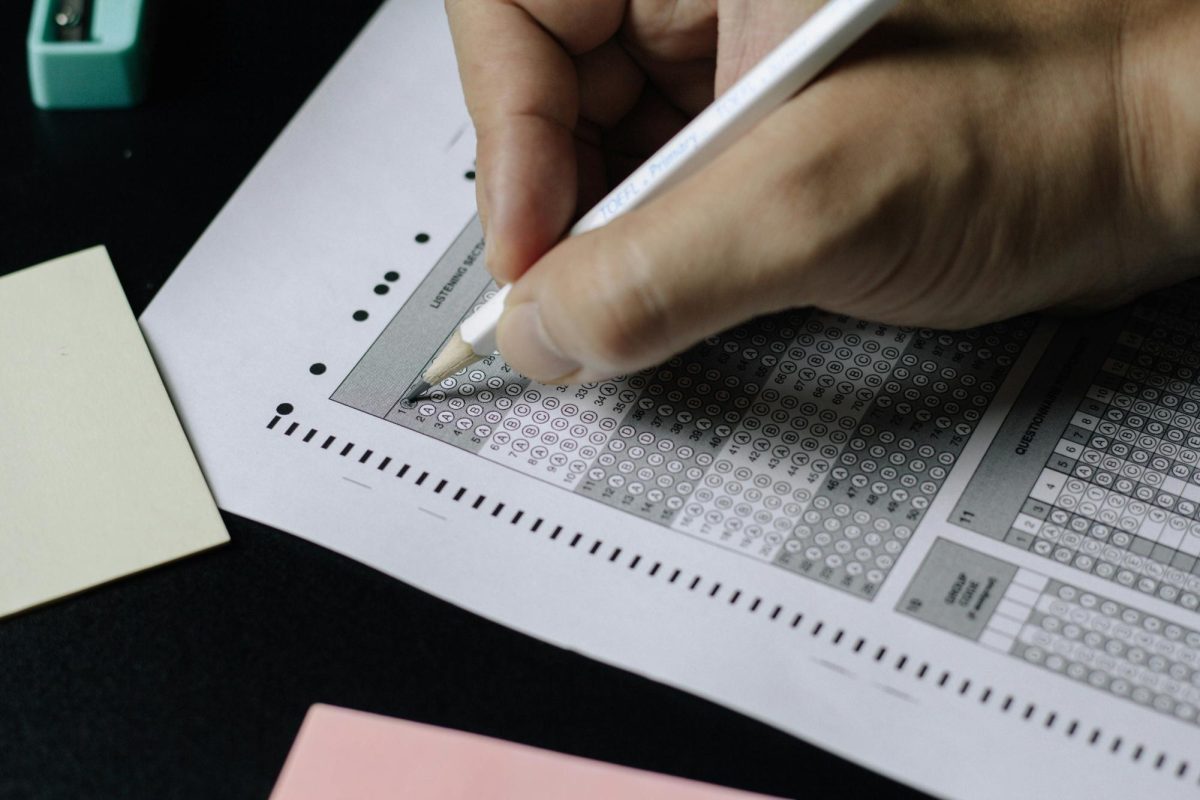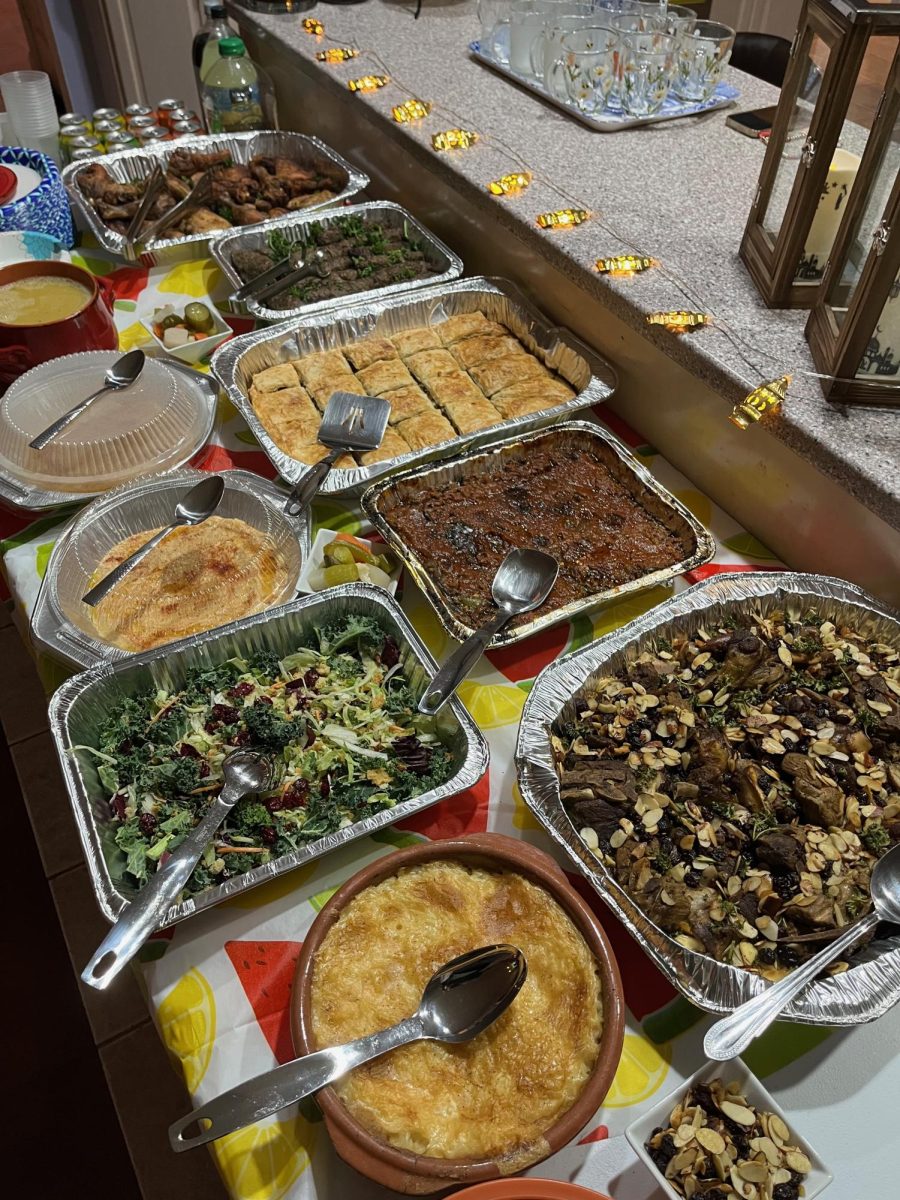Editor’s Note: Danylo is a senior at New Hartford High school who moved to the US from Ukraine in 2022. In this opinion piece, he shares his personal experiences during the Russian invasion into Ukraine. He also supports his claims with evidence gathered from researching Bucha including a visual investigation published on The New York Times youtube channel called “Exposing the Russian Military Unit Behind a Massacre in Bucha.”
Ukraine, February 24, 2022, 4:00 am local: the Russian army starts a full-scale invasion from three sides of the country. Cruise missiles strike military facilities all across the country while ground troops and paratroopers start a ground invasion across the entire border from Crimea on the south, from the Donetsk region on the east and through the Belarus border from the north. Russia committed many violations of humanitarian law and war crimes that happened in the first days of the invasion, but I want to focus on one of the most iconic and tragic events of this war–the massacre in Bucha.
My own family also woke up from the sounds of war that morning. We were sleeping in our home in Kyiv when we heard muffled explosions outside, followed by sounds of neighbors upstairs running back and forth. We tried to stay away from windows after a fighter jet’s flyby. Sleepy and confused, we packed all of our most important things and planned on what to do next, while mom prayed aloud. It seemed that it was all a dream, I wanted to wake up…
I could hear air defense shooting down Russian missiles, traffic outside was as busy as rush hour. All the highways heading outside the city were blocked by traffic. It was clear that it was impossible to leave the city, so we decided to stay. A little later, the priest’s wife from our church invited us to the church not far from our house.
When we left our apartment and our favorite belongings, we left our carefree childhood.
The lower part of the building was partly underground and served as a shelter for several families including us.
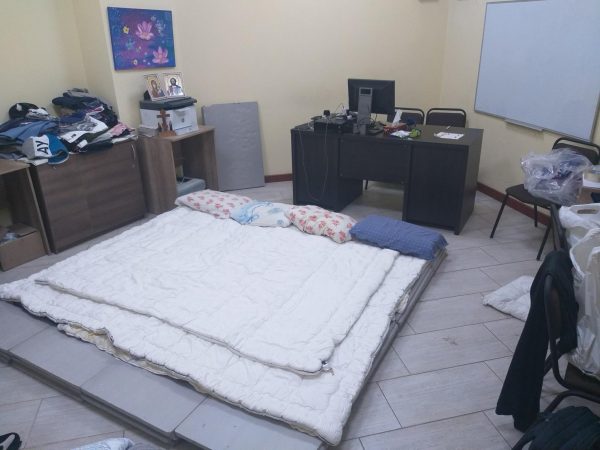
Even in the furthest room we still could hear and feel explosions.
The stores quickly ran out of all the necessary goods, especially food. In the short breaks between the explosions and the air raid siren, parents tried to bring food and blankets to make it softer to sleep on the floor, as well as some other things from home. Five days of life in the shelter were incredibly disturbing, we monitored the news while battles of Ukrainian territorial defense, border control and other volunteers against Russian elite troops took place closer and closer to us. The situation quickly deteriorated.
After five days underground, there was an opportunity to leave by evacuation bus to western Ukraine and then to Poland. My mom, brother, dog and I took a couple backpacks, hugged my dad goodbye without knowing what would happen, and took a trip towards the unknown. We have never seen our previously shining, beautiful Kyiv so gloomy and dark. We went through dozens of military checkpoints, empty towns, fields and hours of complete darkness. Our priest guide was constantly in touch with the military to avoid danger. The route had to be changed several times because of Russian missile attacks on our path. Regular eight hour trip towards the west took over 18 hours. Then, after getting to safety in Poland, we prepared the necessary documents and left for the USA.
Although we were safe, we couldn’t be calm because our dear dad stayed in Kyiv. He was doing volunteer work, helping the church and helping to evacuate people. Russian missile attacks did not stop. Russian militants targeted peaceful homes, schools, kindergartens, hospitals, orphanages… Mom was very worried about dad and other relatives. The lack of contact with relatives from the city of Bucha, in the suburbs of Kyiv, caused particular concern. Mom said that she felt that something very bad was happening there, but at first there was no information. Later we learned that the city and surrounding towns were under Russian occupation. There was no contact with relatives. When dad was finally able to get in touch with them, they said that armored vehicles were driving around the houses and shooting people, which was very dangerous in the city. Dad was looking for ways to help them. They hid in basements for a long time, and when Ukraine started organizing humanitarian corridors, our relatives risked using this corridor and got to a safe place. Unfortunately, many families did not manage to leave the occupation alive. The Russian army brutally and cynically shot any passing vehicle including those with “children on board” signs, killing many civilians who tried to escape the occupied city.
“Maxim jumped out and raised his hands. He was shot in a few seconds. His wife died in the car. Their six-year-old son and the elderly mother of one of Maxim’s friends were also in the car. They survived and are now safe, but deeply traumatized,” reported the BBC.
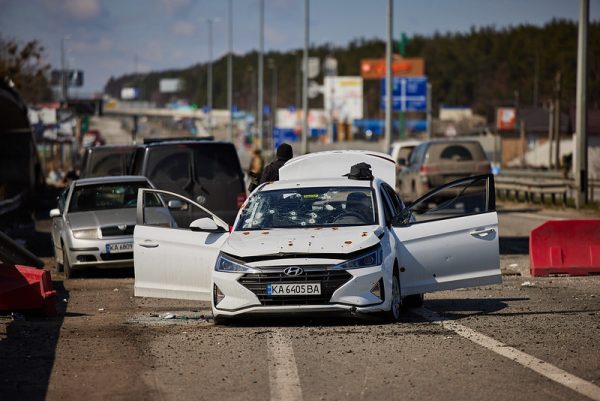
Bucha Massacre
The major goal of the Russian army was to capture and to occupy major cities and their first priority was the capital – Kyiv. The assault on Kyiv began with the landing of Russian troops at the suburban Antonov airfield near the small town of Gostomel. They were more than 200 elite fighters of the Separate Assault Brigade, who used more than 30 helicopters to capture that airfield. They were met by airport border guards and less than 200 members of Ukrainian national guard, reported the New York Times in a video posted on their youtube channel. The airport was heavily damaged by the hostilities, 10 military personnel and more than 70 employees of the aircraft factory were captured by the Russians. But Ukrainian special forces came to the rescue and were able to destroy the maximum number of helicopters and landing forces. The Russians’ plan was to take Gostomel airport by surprise and use it to receive the main armed forces, but Ukrainian warplanes and the 72nd brigade destroyed the landing strip, preventing the landing of aircraft with enemy fighters and ammunition on board. About 13 different highly trained battalions and regiments headed towards the city, after capturing the Chernobyl Nuclear power plant.
On their way towards Kyiv there were just a couple obstacles, two little cities named Irpin and Bucha. Just in the beginning of March 2022 a column of dozens of Russian military vehicles entered Bucha. Thankfully the Ukrainian army was able to stop tanks and armored vehicles from entering the capital itself but Bucha, Irpin and a couple more neighboring cities were under the Russian occupation for about a month.
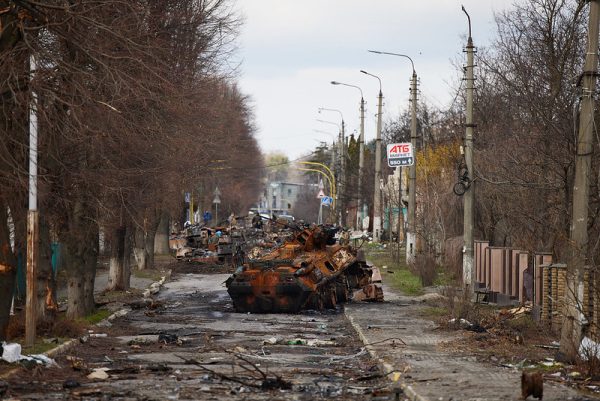
Public Domain Dedication (CC0) https://www.flickr.com/photos/president_of_ukraine/51987935513
During that occupation the Russian army committed several war crimes by killing about 1000 people in that region (there are no actual numbers because some people are still considered missing).
On the third day of the invasion, February 26, a Russian military convoy advanced towards the capital. To enter the city, Russian forces had to go through the suburb of Bucha and the intersection of Yablunska St. but the convoy got badly ambushed by Ukrainian defense forces right next to that exact intersection; they were forced to retreat.
On March 3rd Russian forces returned to the city, but this time with more troops, more vehicles and way more firepower. Among those troops were one of the most advanced and well- trained paratroopers who are commonly used to provide the highest level of security in the most strategic areas. This time they settled in an industrial site on the same street; the only checkpoint there was suppressed with firepower.
Oleksandr Blagodatny
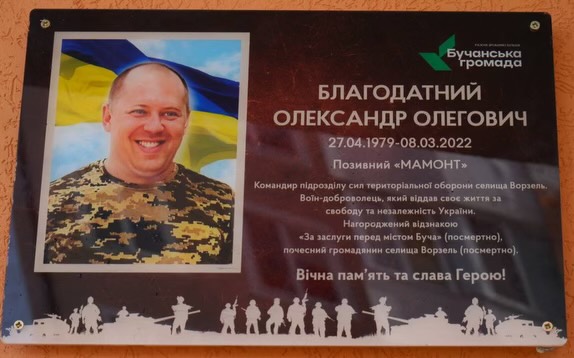
Courageous patriotic citizens of Ukraine stood up to defend their native land, voluntary formations of territorial defense were created, including in Kyiv and nearby cities. The son of my grandparents’ friends also managed the territorial defense unit in the city of Bucha and the neighboring village of Vorzel. They were one of the first to meet the enemy and put up heroic resistance to the invaders. On March 3, 2022, Oleksandr’s unit defended the maternity hospital and the orphanage in Vorzel. Oleksandr was seriously wounded by an enemy sniper and died five days later. He still had parents, wife and daughter waiting for him at home.
When Russian paratroopers captured that street, soldiers and vehicles fired at anything that moved, including civilians.
Russians disabled most of CCTVs(street cameras) in the area but some kept recording, which helped to identify their regiment, their code names and revealed war crimes committed by them. Recordings also showed the presence of high command of the 234th regiment on scene, those who are responsible for committing crimes in that area.
On March 4th reinforcements arrived, troops secured the area and began looking for men of fighting age who may pose a threat.
“They went from house to house threatening to “make it worse” if they get no information about military volunteers in that area,” said Nikita Mihailenko, a friend of mine who was in that area during the attack. The first group of about 10 residents who got captured were separated for men and women, then men were dragged to the Russian base and then questioned. Most of them later were executed.
“I turned around and all those guys were already dead, already shot,” says local resident Tatiana who witnessed the action of murder and was interviewed by the New York Times. . Videos captured several hours later by drone confirmed the presence of executed men near the Russian base and were published on the New York Times investigation of the massacre on their youtube channel. .
Footage from CCTV included in the New York Times youtube video also proved the presence on scene of “ComradeColonel” (code name used only to address high ranking command) the same day civilians were executed. His presence is significant because according to ChatGPT, Command Responsibility Doctrine (under the Geneva Conventions and Customary International Law) states that military leaders can be held accountable if they knew or should have known about war crimes and failed to prevent them or punish the perpetrators. Since video footage shoes that prisoners of war were executed either by his command or his negligence, Russia is guilty of violating international humanitarian law.
Later that day, as Russian forces spread out from the base, at least three more civilians got killed on the same street. Some of them just got unlucky by going to the grocery stores nearby or happened to try to flee the suburb through that exact street. Throughout the occupation various different regiments and units are held responsible for the war crimes that happened in Bucha, but most of the evidence found overwhelmingly links to the 234th, with the killings that occurred on Yablunska Street. Identification of some soldiers was possible because after the execution they took the phones of two victims and made a couple dozen calls to their relatives and friends in Russia. Those names primarily match with the records of members of the 234th regiment according to NYT Investigation published on youtube..
Serial numbers and tactical marks on some of the military vehicles also directly connected to the 234th.
On March 5th, the New York Times youtube video reports that the same Russian paratroopers returned to the same intersection where they were ambushed several days before, but this time their actions were more tactical and professional, they settled another base a couple blocks away from that intersection, vehicles crashed through fences and occupied civilian houses. By 11:00 am, without an actual threat, Russian armored vehicles and soldiers with machine guns opened fire at civilians including one child down the street, killing them. About an hour later, another person was killed. The scene looked post-apocalyptic.
Drone footage again showed the presence of a high-ranked commander on scene; he clearly sees victims, but does nothing to stop the killings. One of the killings happened while he was standing just 75 yards from where a soldier fired at an unarmed woman riding the bicycle.
This continued for weeks– murderers lived alongside their victims because the Russian army occupied residential houses according to relatives of ours who lived nearby.
The massacre on Yablunska St. is just one example that was captured and proved by rock solid evidence. Killings happened all across the city, many were found dead on streets, in their basements, in their apartments and some other places. Hundreds of unarmed men, women and children were brutally murdered, and investigations are still in process. Evidence from the CCTV footage shows direct relation of killings of dozens civilians and some specific regiments and units, and most importantly, the presence of their commanders on the spot. Linking a unit and its commanders to the exact place and time of these killings is important because it is a clear violation of humanitarian law..
“Military commanders, even if they did not pull the trigger, can be held accountable if they knew or should have known about the crimes their troops committed,” The New York Times video investigation says.
Killings continued for weeks under their watch. The Russian government keeps denying that this situation even happened.
No investigation and punishment will return the lives of hundreds who were murdered during the Russian occupation in Bucha, but at least we can spread this information so people know that such violent acts of inhumanity happen literally today. We should never forget the names of those who committed these horrible acts, and the name of the terrorist country – Russia.
If we look at the history, the massacre in Bucha was not the first time when Russia did something like that– thousands were killed in Syria, Georgia and Chechnya, and I question myself… Who will be next?
………………………………………………………
Source:
Exposing the Russian Military Unit Behind a Massacre in Bucha | Visual Investigations
